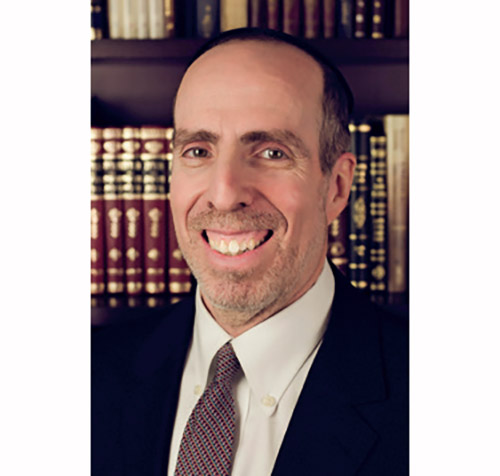
The Religious Significance of the Tel Dan Stele
It was an exciting part of our family’s Israel trip for Binyamin’s bar mitzvah in 2012. A relative who serves as a docent at Jerusalem’s venerated Israel Museum generously offered our family a guided tour of the Biblical- and Talmudic-era artifacts housed at this great museum.
In the midst of this magnificent tour, we arrived at the Tel Dan Stele. A stele is an ancient monument; this monument was erected by the Aramean king Chaza’eil who plays a significant role in Sefer Melachim. This artifact of monumental importance records Chaza’eil’s proclaiming “I killed Yehoram son of Achav king of Israel and I killed Achazyahu son of Yehoram king of the House of David.”
As noted in the December 2010 issue of National Geographic, until 1993 most academicians denied the historicity of David HaMelech due to lack of archaeological evidence of his existence. However, continued the National Geographic article, since the Tel Dan Stele was discovered in 1993, few academics persist in this denial.
We noted how the discovery of the Tel Dan Stele had significance beyond proving to the world of the academy that David HaMelech really lived. It demonstrates the fallacy of drawing conclusions from the absence of archaeological evidence. As such the Tel Dan Stele is a significant component in the Orthodox arsenal of fulfilling the mandate set forth in Pirkei Avot (2:19) to know how to respond to the heretic.
Contradiction
Our relative, though, quietly said to us that it is not so simple since there is a contradiction between the Tel Dan Stele and the Tanach. The Stele indicates that the Aramean king killed both the Israelite king Yehoram son of Achav and the Judean king, Achazyahu son of Yehoram. Melachim II 9:14-27 records that the Chaza’eil Aramean king only wounded Yehoram and that Yeihu subsequently killed Yehoram and Achazyahu.
Resolving the Contradiction
At the time we did not know how to respond. However, upon investigation we discovered that one could easily explain that since the wounding of Yehoram ben Achav by the king of Aram drew Achazyahu to visit him (Melachim II 8:29), creating the opportunity for Yeihu to kill both Yehoram and Achazyahu, the king of Aram took the credit for killing them.
In the ancient world, it was common for ancient kings to exaggerate their victories and ignore their losses. It is attributed to Napoleon that “history is always written by the winners. When two cultures clash, the loser is obliterated, and the winner writes the history books: books that glorify their own cause and disparage the conquered foe.” The Tanach differs fundamentally in many ways from its counterparts in the ancient world, l’havdil, but especially in this manner. The Tanach records the failings often at great length, such as in Sefer Yirmiyahu, which occupies no less than 52 perakim.
Thus, it is most reasonable to resolve the contradiction by attributing historic accuracy to the Tanach and a moderate dose of exaggeration on the part of Chaza’eil Melech Aram. This is quite a reasonable conclusion, which one does not have to arrive at based on faith alone.
Conclusion
A few years ago, a letter to the editor appeared in a local secular Jewish newspaper in which the writer made the bold assertion that archaeology proves the Tanach to be historically inaccurate. Our brief discussion of an artifact of monumental importance provides a taste as to the naivet? and lack of sophistication on the part of this secular letter writer. For a bit of a longer introduction to harmonizing Torah and archaeology, please visit my essay archived at https://www.ou.org/life/history/an-introduction-to-archaeology-and-tanakh/.
By Rabbi Haim Jachter
Rabbi Haim Jachter is the spiritual leader of Congregation Shaarei Orah, the Sephardic Congregation of Teaneck. He also serves as a rebbe at Torah Academy of Bergen County and a dayan on the Beth Din of Elizabeth.








